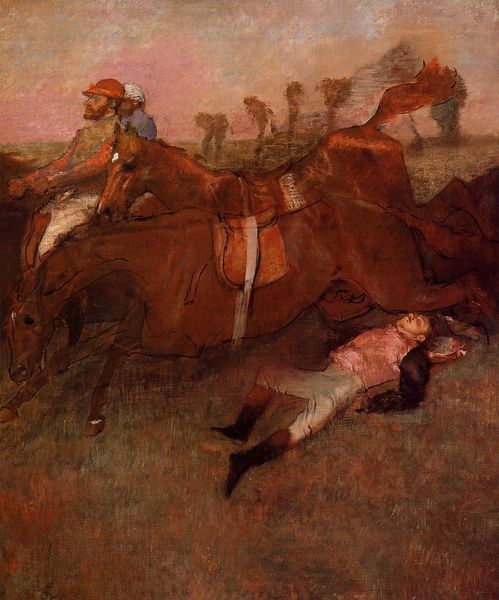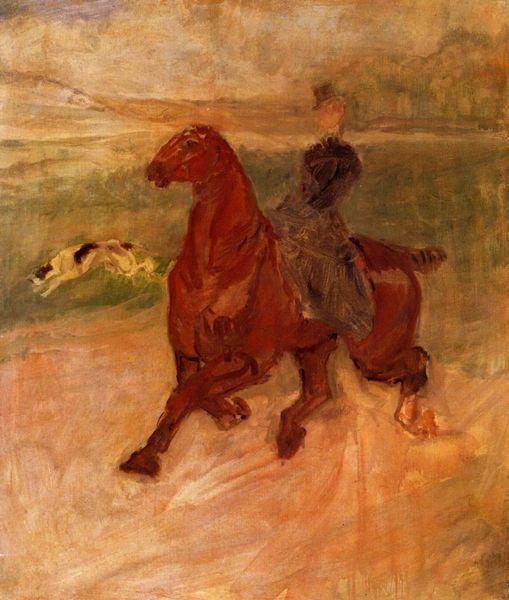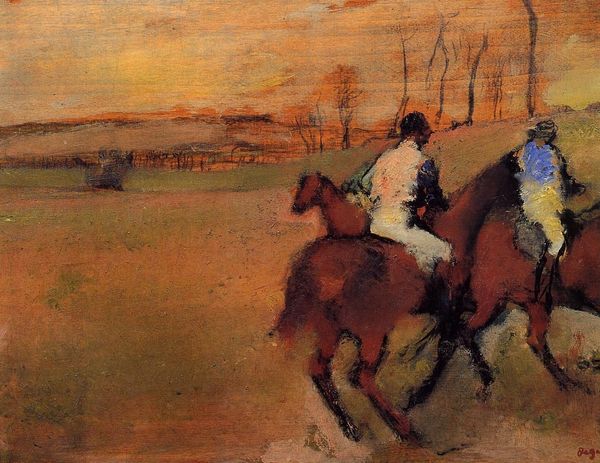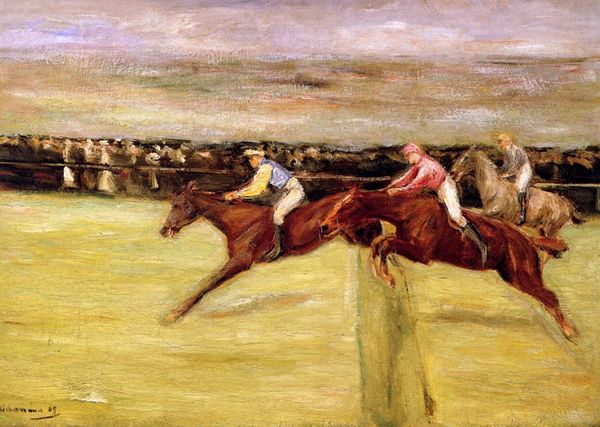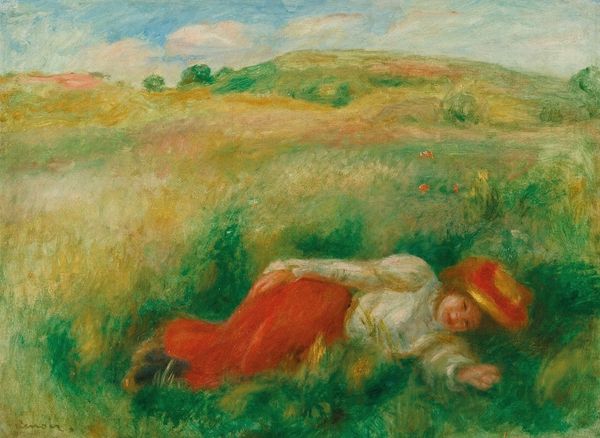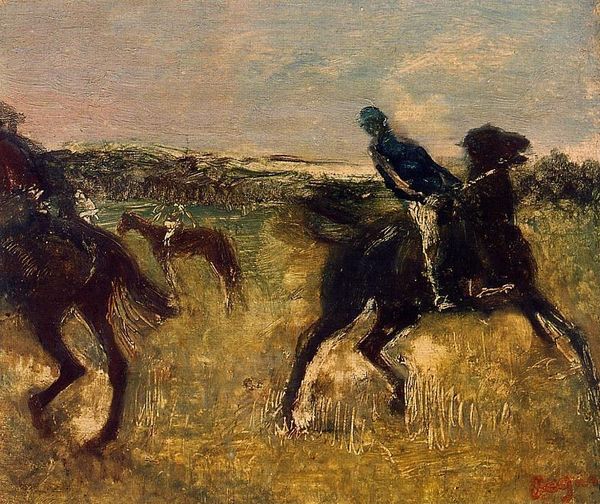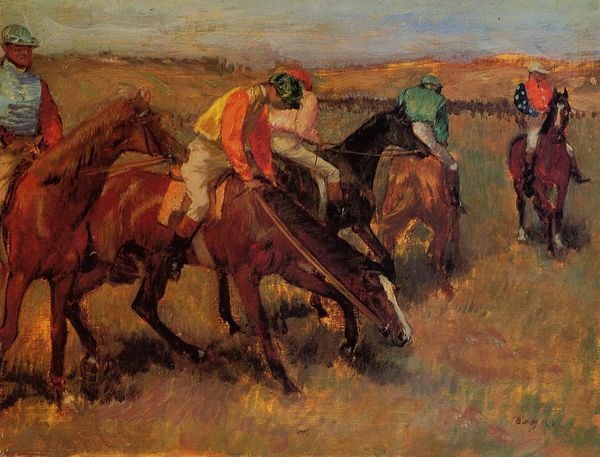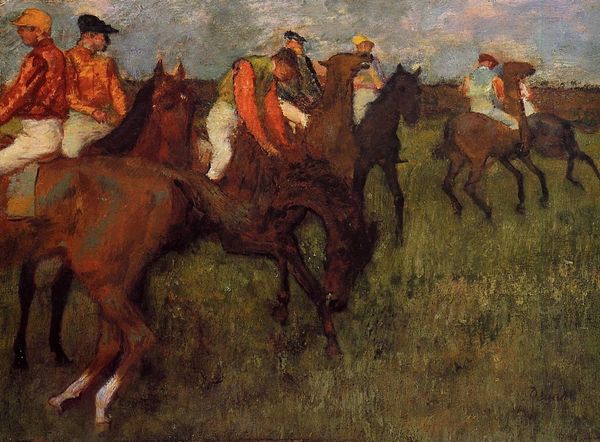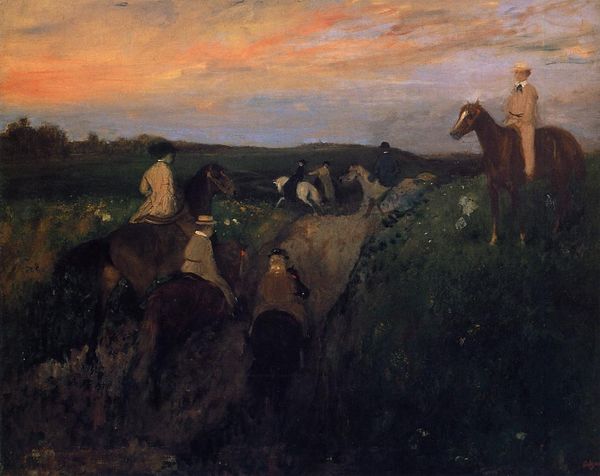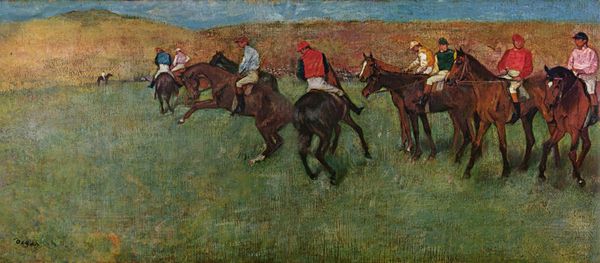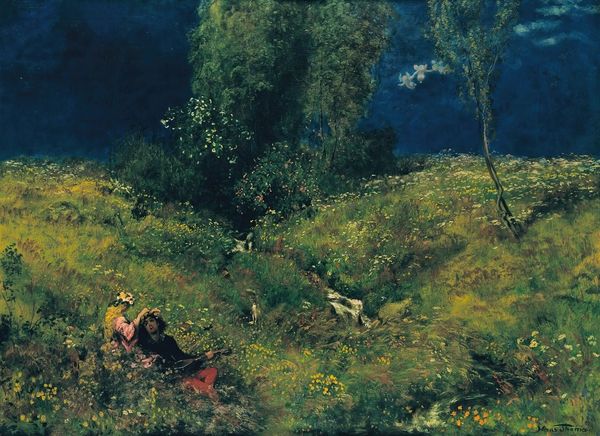
Copyright: Public Domain: Artvee
Curator: Edgar Degas’s oil painting, Injured Jockey, was completed around 1896. My immediate response is unease, a stillness contrasting with the implied speed. Editor: It strikes me as rather bleak, doesn't it? The stark angle of the hillside and the way the light seems to pool around the fallen rider evokes a profound sense of isolation. But what drew Degas to this specific, and frankly, disturbing subject matter? Curator: Degas was fascinated by movement, the mechanics of bodies in motion, especially those of horses and dancers. The labor, training, and commodification of bodies interest me. Think about the historical context: the late 19th-century explosion of industrial capitalism with its impact on both labor and leisure. Editor: Absolutely. And how does the symbolic narrative intertwine? We have the obvious visual symbolism of the fallen man juxtaposed with the fleeing horse, a universal symbol of power, energy, perhaps even untamed desire, continuing on without its master. There's a poignant contrast there, a subtle commentary on the human cost of spectacle and sport. Curator: Considering it's an oil painting on canvas, notice Degas's almost sketch-like quality of execution, his apparent embrace of accident. I believe this aesthetic actually challenges the formal constraints between so-called "high" and "low" art forms. Here we see it applied not just to an elite pursuit, such as horseracing, but to themes of accident and dispossession. Editor: I wonder about the intentional use of color. The dominance of the green hillside, the earthy tones of the horse and the jockey's stark, bright colors which create an almost allegorical quality. Yellow for cowardice maybe? Black, for death and oblivion? Curator: Your interpretation of color taps into cultural anxieties about sport and mortality. Degas pushes those anxieties to the fore by portraying a vulnerable moment of precarity and pain. Editor: The ambiguity here is unsettling. Is the jockey merely injured, or something more dire? This single frame captures a collapse of control, of the human element succumbing to something bigger, faster. Curator: By capturing a fractured, perhaps ignored, moment, the work critiques both social stratification and economic exploitation tied to sport and labor practices. Editor: Ultimately, both interpretations speak to how we perceive the symbols of motion, success, and labor, reminding us that progress isn't without consequence. Curator: True. It reminds us to observe closely the tangible cost of those fleeting images of victory.
Comments
No comments
Be the first to comment and join the conversation on the ultimate creative platform.
